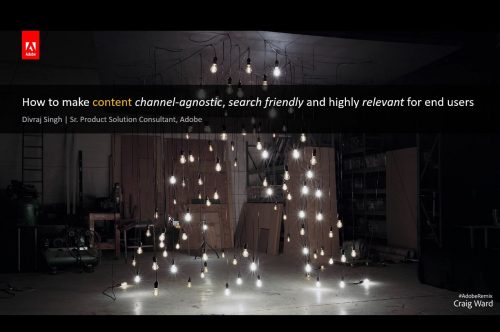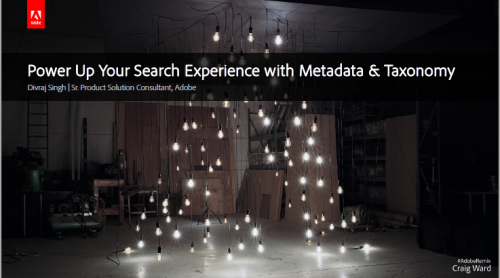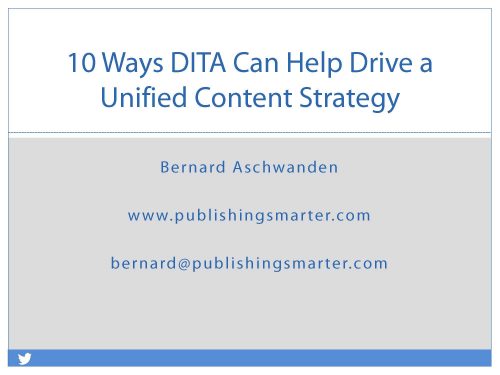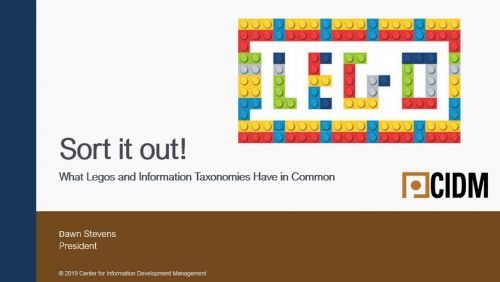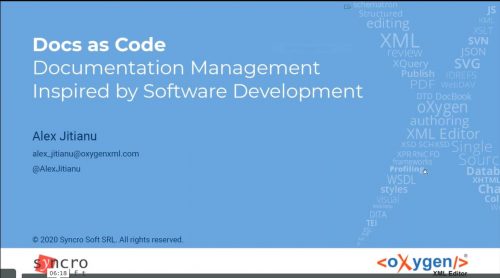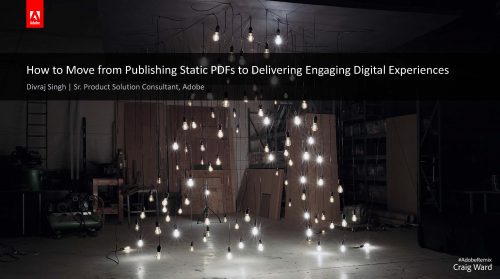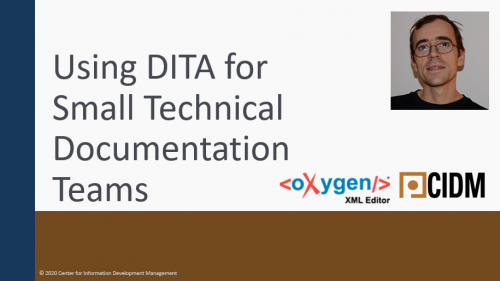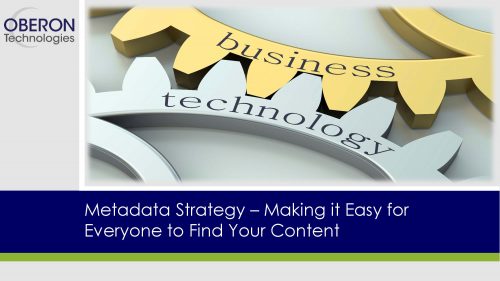- How to make your content intelligent?
- How to make your content channel agnostic?
- How structured content can help achieve these objectives?
-
Date: July 11, 2019 Content needs to be delivered across multiple channels – printed documents, website, mobile app, chat bots, customer support website, IoT devices, and beyond – but needs to be relevant to end users in context of their search. However, end users struggle to find the right content easily as authors are always short of time to create content best suited for all these needs. Content needs to be served up on demand almost like a service which works no matter the device, channel and context in which it is viewed. It all comes down to structure. Find out how you can make your content ‘future ready’ by following some intelligent techniques. Key takeaways:
-
May 13, 2020 There is an explosion of content today. But what makes your content stand out is – relevance and searchability. To ensure that customers don’t have to spend hours searching through your content, metadata is key. And to know what metadata to add while authoring, a well-established taxonomy is key. To design a truly best-in-class content search experience metadata and taxonomy need to work in tandem. In this webinar we will showcase:
- How to leverage metadata to make your content searchable
- What is the difference between good and bad taxonomies
- A live example of taxonomy development using Adobe Experience Manager
-
Date: October 2, 2019 Prior to DITA, there wasn’t much we could do when it came to strategizing with the rest of the enterprise and pooling our tools, processes, and content. That’s no longer the case; as we see more and more DITA adoption from many expected and unexpected divisions, from Training and Support to Academic Publishers, Operations and Insurance. A unified, DITA-driven, enterprise-wide approach to content can have a profound impact on the enterprise. When content created by the enterprise is treated as a valued and valuable corporate asset, it’s a win-win-win situation. It’s more efficient for the enterprise and easier for content creators. But end users reap the real benefit by getting the content they need when they need it. In this webinar, Bernard Aschwanden, will take you through 10 ways in which DITA can help drive unified content strategy. Presented by: Bernard solves documentation-based problems and helps companies generate more revenue. He guides clients through the best processes to create, manage, and deliver content. Once content is delivered, he helps socialize the message, understand and act on feedback, and improve the process and workflow. He is the founder of Publishing Smarter (www.publishingsmarter.com), an Associate Fellow of STC, and a Past President of STC. Bernard has helped hundreds of companies implement successful solutions. He is focused on publishing better, publishing faster, and publishing smarter.
-
July 21, 2021 With this webinar, we are pleased to announce the release of the first-ever e-learning course to train technical writers and subject matter experts on the use of Simplified Technical English (STE), the global standard for writing clear and concise content. Most of the world’s leading companies have accelerated their digital transformation efforts during the pandemic—efforts that are not slowing down. Content plays a key role in digitalization, as it has an important impact on the customer experience, where good quality content will help grow and create new business and service models and ensure safe product use. Because of this key role, it is important that global writing teams learn how to write content that is accurate, clear, aligned, and easy to find by their customers. Through STE companies can maximize the value of their enterprise content, whether this is for technical documentation, marketing, or support. Technical writers will be able to further improve their skills and show industry credibility through an e-learning course, which one could do at any time and from any location. During this webinar, participants will learn more about STE, the values it brings, and how this e-learning course will help you create the best possible content. Presented by: Berry Braster has been in the technical documentation field for over 18 years and has helped implement content strategies, including the use of DITA and HyperSTE controlled language software. As Technology Director, Berry is involved with connecting technical documentation to IoT, and how to leverage on technologies like Augmented and Virtual Reality.
-
August 28, 2019 Looking for a single piece of content on a web site is often compared to digging in a giant bucket of LEGOs for a single unique piece – an often frustrating and futile endeavor. If those LEGOs are sorted by certain distinguishing attributes, such as color and size, the odds of finding a particular piece increase dramatically. As a result, companies often take a “LEGO-block” approach to their information taxonomies. However, the sorting of LEGO blocks is child’s play, compared to the intricacies of sorting technical content – the distinctions are not always as visible as color or size, and attributes that are that obvious may not be very useful in a search. Nevertheless, there are lessons we can learn from the “LEGO-block” approach. In this session, Dawn draws parallels between sorting LEGOs and sorting technical content, and provides suggestions for going deeper when the Lego model falls short. Presented by: Dawn Stevens is the President, and owner of Comtech Services and the Director of the Center for Information-Development Management. With over 25 years of experience, including 15 years at Comtech, Dawn has practical experience in virtually every role within a documentation and training department, including project management, instructional design, writing, editing, and multimedia programming. With both engineering and technical communication degrees, Dawn combines a solid technical foundation with strong writing and design skills to identify and remove the challenges her clients face in producing usable, technical information and training.
-
September 16, 2020 Tools and techniques used in software development can also be applied for documentation management:
- Storage and issue management using GitHub
- Automated quality checks and continuous publishing using Netlify
- Editing and collaboration support
- Release strategies
-
September 19, 2019 No matter where and how you author your content today – Word, InDesign, XHTML, Markdown, DITA, FrameMaker, and more – offering an immersive experience to your customers is the need of the hour. If you are still publishing your content as static PDFs only, you are depriving them of a rich and rewarding consumption experience full of unique possibilities. With the right digital experience solution, you can plug-in data insights to design, manage and deliver consistent, personalized and targeted content for every single customer. Join us in this webinar to see how an integrated solution can help you:
- Move from publishing static PDFs only to delivering immersive, fluid experiences throughout the customer journey
- Leverage next-generation capabilities like personalization, analytics, and targeting
- Still be able to publish to other popular formats at will – HTML5, Mobile Apps, EPUB, KINDLE and more
-
April 1, 2020 Implementing DITA with a small team of technical writers does not have to be expensive or difficult to set up. We'll go through the steps of implementing a DITA solution using GitHub for storage and workflow and Oxygen XML Editor for editing. We'll also look into how you can automate publishing and receive feedback from your end users. As a practical example we'll look into how editing, collaboration and publishing on the Oxygen XML Blog works. Presented by: Radu Coravu started working more than 10 years ago as a software developer for Syncro Soft SRL, the manufacturer of the popular oXygen XML Editor. During the last years, his main focus has been in the development of the visual XML Author editing environment and the specific-DITA support provided by oXygen. He provides support for complex integrations and helps steer the product in the right direction, all this with some development on the side.
-
September 17, 2019 When your users can’t easily find your information online, they may turn to the competition. When your writers can’t find the content they need, they will recreate it. And, when your organization doesn’t have a common strategy to identifying information across the enterprise you are wasting valuable resources as they search to find needed information. Whether in document properties, a keyword spreadsheet or within your content management systems, metadata is a key to findability. Learn how a metadata strategy adopted by all the content creators can make it easier for everyone inside and outside your organization to find the information they need. Presented by: Todd Burdin is a senior solution architect and strategic business consultant with 25+ years of software development and business consulting expertise, encompassing the entire content development lifecycle. He has extensive experience delivering innovative enterprise solutions for content management, structured authoring, and publishing to a diverse set of industries, including equipment manufacturers, pharmaceuticals, legal mediations, hospitals, and financials. Todd has worked at Oberon Technologies for 6+ years. Previous employers include PTC, Arbortext, Entrusted Solutions, and First Consulting Group.

